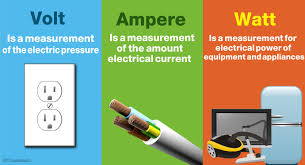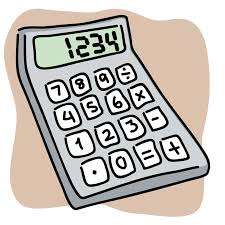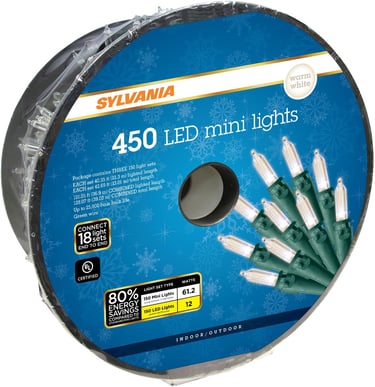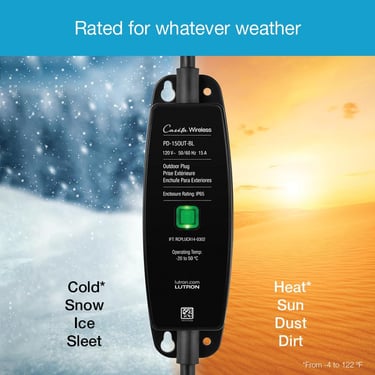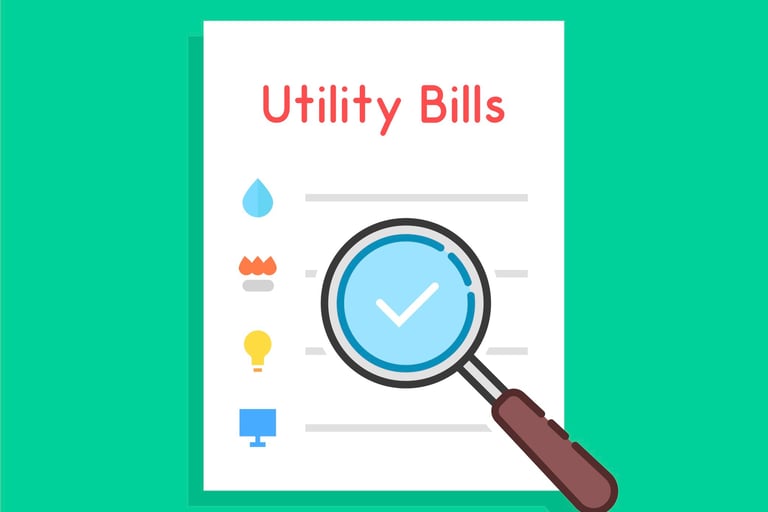How Holiday Decorations Can Skyrocket Your Energy Bill
Learn how to calculate the energy cost of your holiday decorations with our easy guide! Track your energy use and costs using kWh calculations, apps, and tools.
Frank Adminei
4/10/202513 min read
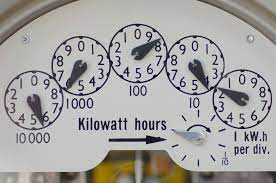

Introduction:
Wondering how much your holiday decorations are adding to your energy bill? Between twinkling lights, glowing inflatables, and electric trees or menorahs, it’s easy to lose track. The good news? Calculating your holiday energy usage is simpler than you think. In this quick guide, I’ll show you how to estimate costs, track usage, and even use free tools to stay energy-smart this season. Let’s dive in and light up your holidays—without shocking your wallet!
Understanding kWh and How It Relates to Your Holiday Decorations
When the holidays roll around, we often get excited about decking out our homes with lights, inflatables, and decorations. But have you ever stopped to think about what’s really happening behind the scenes when it comes to energy consumption? How do you actually measure all that power your decorations are using—and, more importantly, how does it impact your electricity bill?
Let’s break it down.
What Is a Kilowatt-Hour (kWh), and How Is It Used to Measure Energy Consumption?
First things first: kWh stands for kilowatt-hour, which is the unit used by your electric company to measure energy usage. When you see your monthly energy bill, it's based on how many kWh you’ve consumed.
To put it simply, a kilowatt-hour is the amount of energy you use when you run something that needs 1,000 watts of power for one hour. So, for example, if you have a 100-watt bulb running for 10 hours, it would consume 1 kWh (because 100 watts × 10 hours = 1,000 watt-hours, or 1 kWh).
Breaking Down the Concept of Watts, Volts, and Amps—What You Need to Know to Calculate Your Energy Usage
Now, let’s get a bit technical—but don't worry, I’ll keep it simple.
Watts (W): This is the amount of power your appliance or decoration uses. The higher the wattage, the more power it consumes. For example, a standard string of lights might use about 25 watts, while a large inflatable could use 100 watts or more.
Volts (V): This is the force that pushes electricity through your wires. In the U.S., most household outlets run at 120 volts.
Amps (A): This is the amount of current your device uses. The higher the amps, the more electricity is flowing. You can calculate amps by dividing watts by volts—simple math!
So, let’s say you have a 200-watt inflatable and it’s connected to a 120-volt outlet:
Amps = Watts ÷ Volts
Amps = 200 watts ÷ 120 volts
Amps = 1.67 amps
Now you know how much current your inflatable is using!
The Role of kWh in Your Electricity Bill: How Much Does One kWh Cost?
Alright, now here’s the real kicker: How much does all this cost? The cost of a kWh can vary depending on where you live, but let’s say it’s about $0.15 per kWh on average (check your local rates to be sure).
So, if you run a 100-watt string of lights for 5 hours a day, here’s what you’re looking at:
100 watts × 5 hours = 500 watt-hours (0.5 kWh) per day.
0.5 kWh × 30 days = 15 kWh for the month.
At $0.15 per kWh, that’s $2.25 for the month.
It doesn’t sound like much, right? But keep in mind, if you’re running several lights, inflatables, or animated decorations, those costs can add up quickly.
So, the next time you plug in your holiday décor, remember that understanding kWh and how it affects your energy bill can help you keep your celebrations bright without breaking the bank. It’s all about being mindful and making smart choices to maximize the magic without the shock!
Step-by-Step Guide to Calculating Energy Usage for Holiday Decorations
If you’re like me, you love decking out your home for the holidays, but that doesn’t mean you want to end up with an unpleasant surprise on your electricity bill. So, how do you figure out exactly how much energy your decorations are using? Let’s break it down.
How to Calculate Energy Usage for Lights, Inflatables, and Other Electrical Decor Items
When it comes to calculating energy usage, it all boils down to a few simple steps. You’ll need to know the wattage of each item (which is usually listed on the packaging or the label) and how long you plan to run them. Then, we’ll use a straightforward formula to get the energy consumption in kilowatt-hours (kWh).
Let’s take a deeper look at how this works:
Find the wattage of your holiday decoration.
Determine how many hours a day you plan to run it.
Use the kWh formula:
Watts Used×Hours Used per Day÷1000=kWh Used per Day\text{Watts Used} \times \text{Hours Used per Day} \div 1000 = \text{kWh Used per Day}Multiply that result by the number of days you plan to use the decoration for a monthly estimate.
It’s as simple as that.
Formula for Calculating kWh
To recap the formula for energy usage:
Watts Used×Hours Used÷1000=kWh Used\text{Watts Used} \times \text{Hours Used} \div 1000 = \text{kWh Used}
This gives you the energy usage in kilowatt-hours (kWh), which is what your electric company uses to calculate your bill. Don’t worry if that seems confusing at first—it’s all about keeping things simple and knowing how much energy your décor actually needs.
Example of a Typical Holiday String of LED Lights
Let’s go through a real-world example to make it clearer. Suppose you have a set of LED string lights that are 50 watts (pretty typical for a decent-sized set). You plan to leave them on for about 6 hours per day. Here’s how you’d calculate the energy usage:
Watts used: 50 watts
Hours used per day: 6 hours
Using the formula:
50 watts×6 hours÷1000=0.3 kWh per day50 \, \text{watts} \times 6 \, \text{hours} \div 1000 = 0.3 \, \text{kWh per day}
To find out how much energy they’ll use in a month:
0.3 kWh/day×30 days=9 kWh per month0.3 \, \text{kWh/day} \times 30 \, \text{days} = 9 \, \text{kWh per month}
If your electricity rate is $0.15 per kWh, your monthly cost would be:
9 \, \text{kWh} \times 0.15 = $1.35 \text{ for the month}
So, in this case, running those 50-watt LED string lights for 6 hours a day would cost you just $1.35 for the month. Not too bad, right?
But imagine if you’re running several sets of lights or other decorations, like inflatable yard displays. Those numbers can add up quickly, so knowing how to calculate usage is key to staying on top of your holiday energy costs.
By following this simple guide, you’ll have a better sense of your energy usage and be able to keep the festive spirit alive without the post-holiday shock when the bill arrives!
Recommended Tools and Resources to Help with Energy Calculations
Calculating energy usage doesn’t have to be a guessing game. With the right tools and resources, you can quickly and accurately track how much energy your holiday decorations are consuming. Plus, using smart technology can help you monitor your energy use in real-time. Let’s dive into the best options out there!
Best Energy Calculators for Quick and Accurate Results
If math isn't your thing or you just want a quick estimate, energy calculators are a great way to simplify the process. Here are a few excellent tools:
Energy.gov Energy Calculator
The U.S. Department of Energy offers a simple, online energy usage calculator that helps you estimate the power consumption of various household items, including holiday decorations. Energy.gov Energy Calculator provides a no-fuss way to get a rough estimate without pulling out the calculator.Kill-A-Watt Electricity Usage Monitor
This handy tool plugs into your devices to measure how much power they’re using in real-time. It’s especially useful for calculating the consumption of things like inflatables or lights that don’t have their wattage listed. You can find it on Amazon or at most hardware stores. Kill-A-Watt on Amazon.
Recommended Apps to Track and Manage Holiday Energy Usage
If you want to take a more tech-savvy approach, there are several apps that can help you track and manage energy usage during the holiday season:
Sense Energy Monitor
Sense is an app that works with an energy monitor you install in your home’s electrical panel. It tracks your energy usage and breaks it down by appliance, helping you see where the bulk of your power is going. This is perfect if you’re trying to get a holistic view of how much energy your holiday decorations are using. Sense Energy MonitorWattbot
Wattbot is a simple app that lets you input the wattage of your devices and track their usage over time. It’s especially great for calculating the power consumption of your decorations. You can also set reminders to turn off decorations after a certain time, helping you manage energy more efficiently. WattbotMyEnergy by Constellation
If you’re looking for a user-friendly app to help you monitor your energy usage and find ways to save, MyEnergy provides an easy way to see your usage trends, and it often includes suggestions for reducing consumption. MyEnergy
How to Use Smart Plugs with Energy Monitoring Features to Get Real-Time Consumption Data
For those who want to get even more granular with their energy consumption, smart plugs are a game-changer. Not only do they allow you to control when your decorations turn on and off, but many models also offer energy monitoring features. Here’s how to make the most of them:
TP-Link Kasa Smart Plug with Energy Monitoring
The Kasa Smart Plug gives you the ability to monitor the energy consumption of any connected device in real-time through the Kasa Smart app. It tracks your energy usage, so you can easily see how much power your holiday lights, inflatables, or other decorations are drawing. It’s a convenient way to keep tabs on your energy consumption without guesswork.Amazon Smart Plug with Alexa Energy Monitoring
If you already use Alexa, the Amazon Smart Plug is an easy option for managing your holiday decorations. Through the Alexa app, you can track the power usage of any plugged-in device, including lights or projectors. You can even set schedules or timers to ensure that your decorations aren’t using power unnecessarily.Wemo Insight Smart Plug
Similar to the others, Wemo Insight provides real-time energy monitoring and gives you a breakdown of how much electricity each device is using. The plug also integrates with other smart home devices, making it easy to control via voice commands or an app.
By using these tools, you can easily track your holiday energy consumption and make adjustments as needed. Whether you’re looking for quick estimates or detailed, real-time data, these resources will help you make your holiday decorating more energy-efficient—and keep your wallet happy too!
Regional Considerations: How Local Energy Rates Affect Your Energy Costs
When it comes to holiday decorating, one thing that can make a huge difference in your energy costs is where you live. Electricity rates aren’t the same everywhere. In fact, they can vary dramatically depending on your region, state, or even country. So while your neighbor’s holiday lights may seem to cost the same as yours, your energy bill might tell a different story. Here’s what you need to know about how local energy rates can affect your holiday decorating costs.
Understanding How Electricity Rates Differ by Region and How They Impact Your Energy Bill
Electricity prices are influenced by a variety of factors, including the source of energy in your area, the infrastructure, and supply and demand. For example, regions that rely heavily on renewable energy sources, like hydroelectric power, tend to have lower rates. On the other hand, areas that depend on fossil fuels or have limited energy production capacity may see higher rates.
The cost per kilowatt-hour (kWh)—the unit of measurement for electricity consumption—can vary significantly based on where you live. In the U.S., for example, the national average cost is around $0.15 per kWh, but some states can have rates as low as $0.09, while others can climb to $0.25 or more.
Example of Varying Energy Rates in Different States or Countries, and How It Changes Your Total Costs
Let’s put this into perspective with a real-world example. Imagine you’re running a set of holiday LED lights (50 watts) for 6 hours a day, over a 30-day period. Here’s how your costs could vary depending on where you live:
State A (low rate: $0.09 per kWh)
Energy used: 9 kWh (as we calculated earlier)
Cost for the month: 9 kWh × $0.09 = $0.81
State B (average rate: $0.15 per kWh)
Energy used: 9 kWh
Cost for the month: 9 kWh × $0.15 = $1.35
State C (high rate: $0.25 per kWh)
Energy used: 9 kWh
Cost for the month: 9 kWh × $0.25 = $2.25
As you can see, even though you’re using the same amount of energy, the cost can vary depending on the local rates. That’s why it’s important to know your area’s energy rates—they can make a big impact on your overall holiday spending.
What to Look for in Your Energy Bill to Assess the Impact of Your Holiday Decorating
When your energy bill arrives, you’ll want to look for a few key things to assess how much your holiday decorations are contributing to your total costs. Here’s what to keep an eye on:
Energy Consumption (kWh): Look for the kWh section of your bill. This will tell you how much electricity you used during the billing period. If you have a smart meter, it may even provide a breakdown of peak and off-peak usage.
Cost Per kWh: Check to see what you’re being charged per kilowatt-hour. This is usually listed in the fine print of your bill. If your energy rate is higher than average, it could be affecting your decorating costs more than you expect.
Seasonal Usage Patterns: Many energy companies adjust their rates during peak seasons, like winter or summer, based on demand. If you’re decorating in the winter, your local utility might increase rates due to higher energy demand across the region. If your bill is higher than usual, this could be why.
If you’re wondering whether your decorations are pushing your bill up, you can calculate their impact by tracking how much extra kWh you’re using during the holiday season, and then multiply that by your local rate. From there, you’ll get a good idea of what’s adding to your overall energy costs.
Understanding regional energy rates is crucial if you’re looking to stay in control of your holiday energy usage. By being mindful of how your area charges for electricity, you can better anticipate costs and make smarter choices for your holiday decorations. Whether you live in a low-cost or high-cost area, these insights will help you plan ahead—and maybe even help you save some energy (and cash) during the most wonderful time of the year!
Here’s your practical example showing how to calculate energy usage and cost for holiday lights:
Practical Example: Walk Through a Sample Calculation
Okay, let’s take all that theory and apply it to a real-world example. Say you’ve got a set of 500 LED lights, each consuming 5 watts of power. You plan on running them for 6 hours a day, for 30 days. We’re going to calculate the energy consumption in kilowatt-hours (kWh), and then we’ll estimate how much this will cost based on your local electricity rates.
Step 1: Calculate the kWh Used by the LED Lights
First, let’s break it down using the formula we discussed earlier:
Watts Used×Hours Used per Day÷1000=kWh Used per Day\text{Watts Used} \times \text{Hours Used per Day} \div 1000 = \text{kWh Used per Day}
Total wattage for all 500 LED lights:
Each light uses 5 watts, so:
500 lights×5 watts=2500 watts (or 2.5 kW)500 \, \text{lights} \times 5 \, \text{watts} = 2500 \, \text{watts (or 2.5 kW)}
Energy used per day:
Now, multiply the total wattage by the number of hours per day the lights are on. You’re running them for 6 hours per day:
2.5 kW×6 hours/day=15 kWh/day2.5 \, \text{kW} \times 6 \, \text{hours/day} = 15 \, \text{kWh/day}
Energy used for the entire month:
To find out how much energy these lights use in a month (30 days), multiply by 30:
15 kWh/day×30 days=450 kWh for the month15 \, \text{kWh/day} \times 30 \, \text{days} = 450 \, \text{kWh for the month}
So, the 500 LED lights will use 450 kWh in total over the course of a 30-day month.
Step 2: Estimate the Cost Based on Average Electricity Rates
Now, let's estimate the cost of running these lights for the month. The average electricity rate in the U.S. is about $0.15 per kWh, but this can vary depending on where you live. Let’s use that rate for this example:
450 kWh×0.15 per kWh=67.5 dollars for the month450 \, \text{kWh} \times 0.15 \, \text{per kWh} = 67.5 \, \text{dollars for the month}
So, running 500 LED lights for 6 hours a day for a month would cost you $67.50 in electricity.
Step 3: A Comparison Between Using LED Lights vs. Incandescent Lights
LED lights are much more energy-efficient than their incandescent counterparts, which is why they’re so popular for holiday decorations. Let’s compare the energy usage and costs of LED lights versus incandescent lights.
Assume we’re using the same number of 500 lights, but the incandescent ones use 40 watts each:
Total wattage for 500 incandescent lights:
500 lights×40 watts=20,000 watts (or 20 kW)500 \, \text{lights} \times 40 \, \text{watts} = 20,000 \, \text{watts (or 20 kW)}
Energy used per day for incandescent lights:
20 kW×6 hours/day=120 kWh/day20 \, \text{kW} \times 6 \, \text{hours/day} = 120 \, \text{kWh/day}
Energy used for the entire month for incandescent lights:
120 kWh/day×30 days=3600 kWh for the month120 \, \text{kWh/day} \times 30 \, \text{days} = 3600 \, \text{kWh for the month}
Cost for the month for incandescent lights:
3600 kWh×0.15 per kWh=540 dollars for the month3600 \, \text{kWh} \times 0.15 \, \text{per kWh} = 540 \, \text{dollars for the month}
Comparison of Costs:
LED Lights: $67.50 for the month
Incandescent Lights: $540 for the month
Conclusion: You can see that LED lights are a huge money-saver compared to incandescent lights, using significantly less energy and costing far less to run. If you're trying to be more energy-conscious (and save money), switching to LEDs is a no-brainer.
By walking through this example, you can see how a little bit of math can go a long way in understanding the true cost of holiday lighting. Whether you're decking out your home for Christmas, Hanukkah, or any festive occasion, keeping energy efficiency in mind can make a big difference in both your energy bill and your environmental footprint.
Conclusion:
Now that you have a good understanding of how to calculate the energy cost of your holiday decorations, it’s time to take action! By assessing the energy usage of your decorations, you can make informed decisions that help keep your holiday season both festive and budget-friendly. Whether you opt for lower-energy alternatives or adjust your lighting schedule, every little change can make a difference. Take a moment to reassess your holiday display and see where you can save—your wallet and the planet will thank you!
